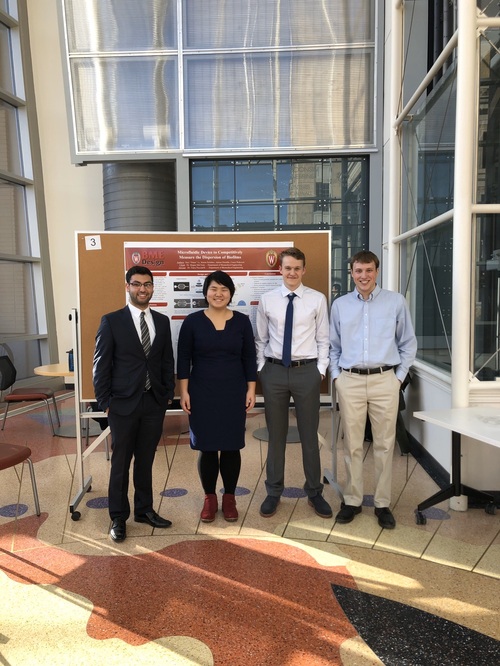Microfluidic Device to Competitively Measure Biofilm Dispersion Potential
This project has been secured to protect intellectual property.
Login for More InformationQuantify biofilm dispersion in a fungal infection in vitro setting.
News About this Project
- News: McClean, Beebe collaborating to develop new microfluidic system for studying fungal infections (March 8, 2021)
- Grant: McClean and Beebe, Under-oil open microfluidic system (UOMS) for studying systemic fungal infection, NIH (NIAID) R01AI15490: $3,804,305 over five years (February 1, 2021)
- Publication: Li C, Hite Z, Warrick JW, Li J, Geller SH, Trantow VG, McClean MN, Beebe DJ. Under oil open-channel microfluidics empowered by exclusive liquid repellency. Sci Adv. 6(16). doi: 10.1126/sciadv.aay9919 (April 2020)
Project Overview
The dispersion of cells from biofilms allows fungi to relocate and seed new locations, often in infectious manners, making dispersion one of the most malevolent aspects of a biofilm complication. Invasive medical devices, such as central venous catheters, can easily be colonized by such biofilms; 80-90% of these infections are caused by a particular fungal species, Candida albicans. 21-32% of patients infected with C. albicans do not survive the infection. The goal of this project is to design and test a device (or devices) where multiple biofilms may be cultured and their dispersion potential competitively monitored in an array of channels. The device should allow the biofilm to be exposed to different environmental conditions such as nutrient depletion or anti-fungal drugs, so that the effect of the environment on biofilm dispersion may be tested quantifiably. Different mutant strains/patients samples can be tested using this platform to establish clinical relevance.
Team Picture

Contact Information
Team Members
- Grace Li - Team Leader
- Adrian Omidfar - Communicator
- Conor Pedersen - BSAC & BWIG
- Simon Schirber - BPAG
Advisor and Client
- Prof. Tracy Jane Puccinelli - Advisor
- Prof. Megan McClean - Client
- Stephanie Geller - Alternate Contact
Related Projects
- Spring 2020: Microfluidic Device to Competitively Measure Biofilm Dispersion Potential
- Fall 2019: Microfluidic device to competitively measure biofilm dispersion potential
- Spring 2019: Microfluidic device to competitively measure biofilm dispersion potential-Junior
- Fall 2018: Microfluidic device to competitively measure biofilm dispersion potential-Junior and Sophomore
- Spring 2017: Device to measure fungal biofilm dispersion
- Fall 2016: Biofilm Dispersion Device
